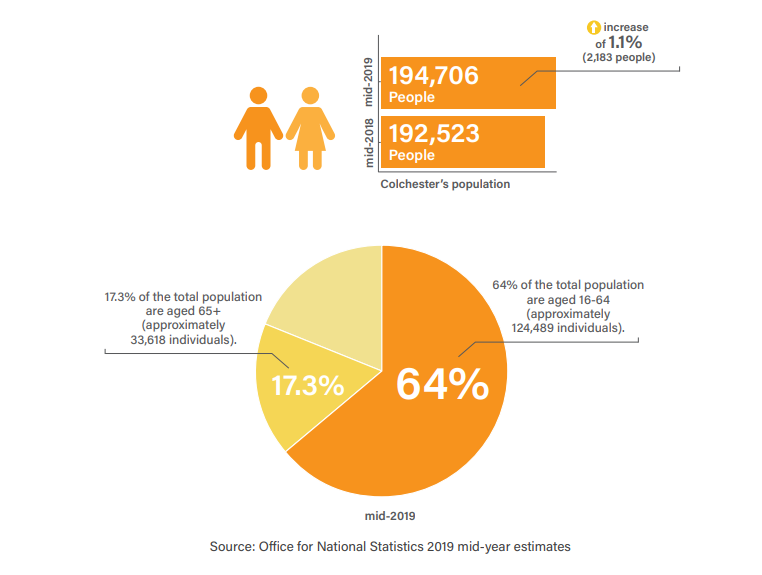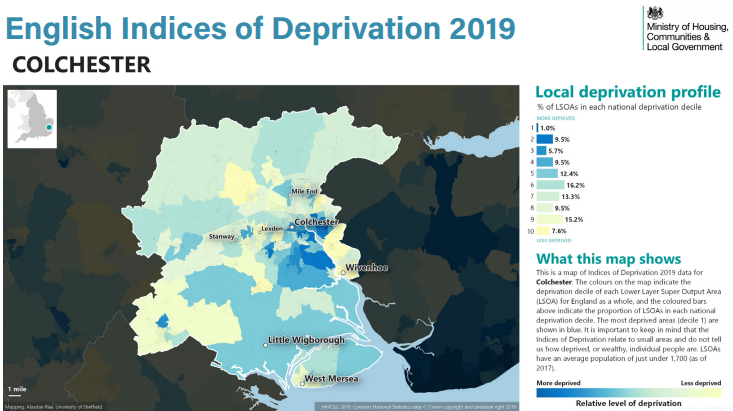Communities Can: A collaborative approach
Contents
Case for change: Our communities
Colchester’s communities are multiple and overlapping.
Communities may include small geographic neighbourhoods, allegiances based on shared characteristics or associations based on common interests. Some communities are long-term, while others may rise in response to an issue or concern.
Residents are likely to be members of many different communities with varying degrees of commitment or attachment. Different communities face different challenges, challenges often multiplied by the pandemic which, for example, disproportionately affected our black and minority ethnic communities and those already impacted by inequalities.
Colchester remains one of the fastest growing areas in England, with that growth has come change in the demographic profile of the city, which is evolving into a less ethnically homogenous location.


Prior to the COVID-19 pandemic, the overall picture of health and wellbeing across Colchester was mixed with specific concerns around mental wellbeing, as well as inequalities in health outcomes for different localities and communities.
Communities may include small geographic neighbourhoods, allegiances based on shared characteristics or associations based on common interests. Some communities are long-term, while others may rise in response to an issue or concern.
Residents are likely to be members of many different communities with varying degrees of commitment or attachment. Different communities face different challenges, challenges often multiplied by the pandemic which, for example, disproportionately affected our black and minority ethnic communities and those already impacted by inequalities.
Colchester remains one of the fastest growing areas in England, with that growth has come change in the demographic profile of the city, which is evolving into a less ethnically homogenous location.
Deprivation in Colchester
Colchester remains roughly in the middle, nationally, in terms of deprivation, but this overall average hides stark differences within Colchester, with the most and least deprived areas often bordering one another.
Prior to the COVID-19 pandemic, the overall picture of health and wellbeing across Colchester was mixed with specific concerns around mental wellbeing, as well as inequalities in health outcomes for different localities and communities.
- Life expectancy is 8.6 years lower for men and 8.0 years lower for women in the most deprived areas of Colchester than in the least deprived areas.
- The rate of killed and seriously injured on roads is worse than the England average.
- The suicide rate is significantly worse than the England average.
- Rates of alcohol abuse are worse than the England average.
Page last reviewed:

